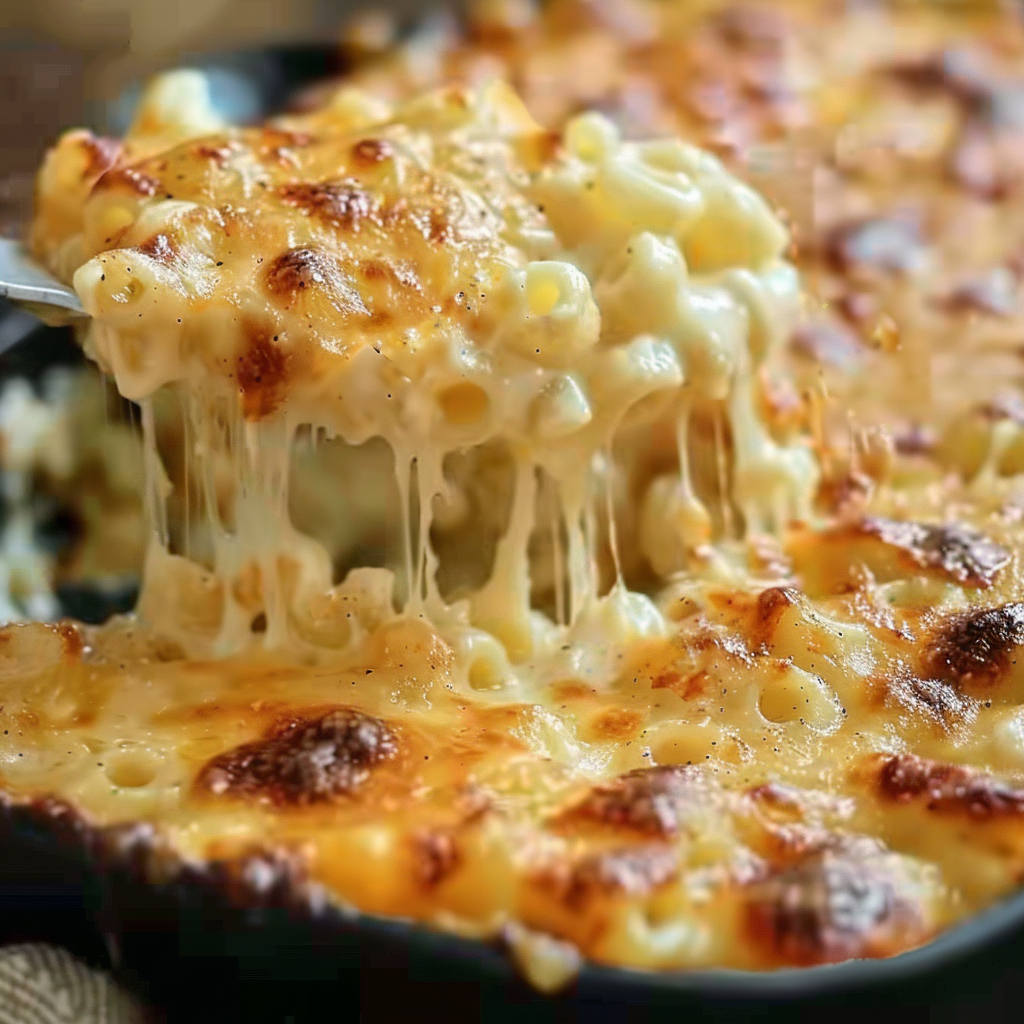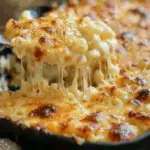Why Mac N Cheese Is the Ultimate Comfort Food
Few dishes evoke the warmth and nostalgia of mac n cheese. This beloved comfort food bridges generations, whether it’s served as a quick stovetop dinner or baked to golden perfection. The combination of creamy cheese, tender elbow macaroni, and subtle seasonings creates a dish that’s simple, satisfying, and deeply comforting.
Rooted in both American tradition and European culinary history, mac and cheese has become a staple in homes across the world. Its enduring popularity stems from its versatility — a humble weeknight meal, a crowd-pleasing side dish, or the base for gourmet variations. No matter how it’s prepared, its creamy texture and rich, cheesy flavor offer an unmatched comfort food experience.
Mac and cheese owes part of its popularity to both homemade recipes and iconic boxed versions. While the boxed kind has its fans, homemade stovetop versions like the one in this guide offer a richer, more customizable dish. And if you’re curious about how this dish took hold in American food culture, it has fascinating ties to Thomas Jefferson, who is credited with introducing pasta and cheese to the U.S. after visiting Italy.
Today, mac and cheese continues to evolve — with countless ways to prepare it and ingredients to personalize it. Whether you’re sticking to a traditional stovetop version or exploring fun twists like bacon add-ins or spicy peppers, the foundation remains the same: a silky cheese sauce and perfectly cooked pasta. It’s no wonder it’s listed on nearly every comfort food roundup and continues to top the charts as a nostalgic favorite.
In this guide, you’ll learn how to make the classic stovetop version using elbow macaroni, understand why each ingredient matters, and explore delicious variations. From ingredient tips to reheating tricks, this article is your all-in-one mac n cheese recipe resource.
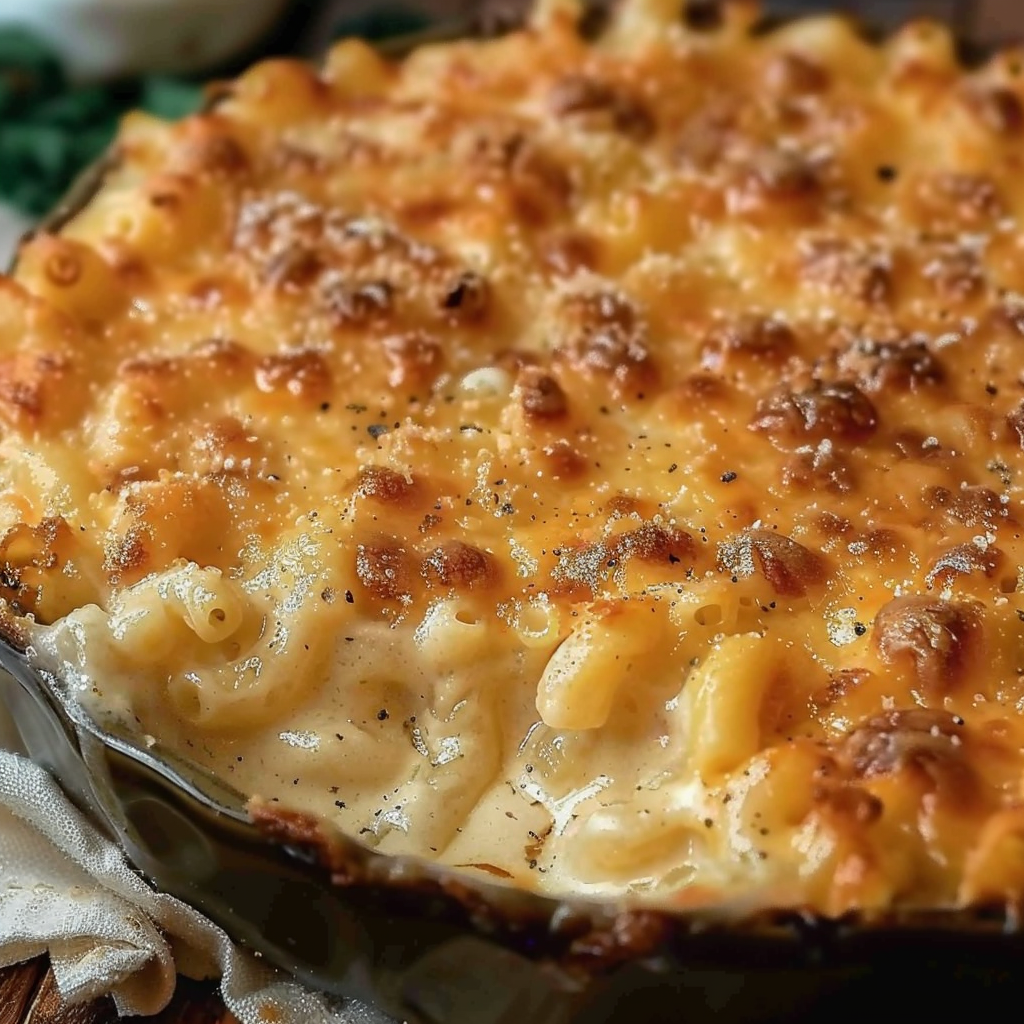
The History and Evolution of Mac and Cheese
The origins of mac and cheese trace back to Europe, particularly Italy, where early forms of pasta and cheese dishes were already being enjoyed centuries ago. Recipes resembling modern macaroni and cheese date as far back as the 13th century, found in Italian cookbooks that combined pasta sheets with grated cheese, often baked together. These early versions laid the groundwork for what would become one of the most beloved comfort foods worldwide.
The dish gained significant popularity in America thanks to Thomas Jefferson, who encountered macaroni during his travels in Europe in the late 1700s. He was so fond of it that he imported pasta machines and served macaroni and cheese at state dinners. This helped elevate the dish’s status in American cuisine and cemented its place at the table.
While early American recipes were often elaborate and baked, the invention of processed cheese in the 20th century changed everything. In 1937, Kraft introduced its boxed mac and cheese, a revolutionary concept during the Great Depression that offered a quick, affordable, and filling meal. This mass-market version made the dish accessible to families across the country, and it quickly became a pantry staple. Today, it remains one of the most recognizable comfort foods in the United States.
The evolution didn’t stop there. In recent decades, food enthusiasts and chefs have elevated mac and cheese to gourmet status. Restaurants offer upscale versions with truffle oil, lobster, or artisan cheese blends. At the same time, home cooks continue to reinvent it through healthier ingredients or plant-based alternatives, showing that this classic still adapts to modern tastes.
Whether you’re preparing a nostalgic stovetop version or experimenting with a new take, it’s clear that mac and cheese has a rich and flavorful history. You can explore the full history of macaroni and cheese to see how far it has come from its humble beginnings. It’s no longer just a simple pasta dish; it’s a culinary icon that has stood the test of time.
For more inspiration and ideas on modern takes, Pinterest boards like this mac and cheese variations board offer creative spins from food bloggers and home chefs alike. Whether traditional or trendy, mac n cheese remains an essential comfort food with a story worth savoring.
Why Elbow Macaroni Is the Classic Choice
When it comes to the perfect mac and cheese recipe, choosing the right pasta shape is just as important as selecting the right cheese. Elbow macaroni has long held its place as the classic option — and for good reason. Its curved, tubular shape offers both nostalgic appeal and practical advantages that make it ideal for this beloved dish.
First, the shape of elbow macaroni allows it to hold creamy sauces exceptionally well. Its small, hollow structure captures cheese sauce in every bite, delivering a richer mouthfeel compared to flat or ridged pasta. The slight curve also creates more surface area, allowing the pasta to cling to the sauce more effectively. This texture match is what makes each forkful of mac and cheese so indulgent.
Another reason for its popularity is how evenly it cooks. Elbow macaroni maintains its shape during boiling and resists getting mushy when blended with hot cheese sauce. This consistency is especially important in stovetop recipes where timing is critical. Even when slightly overcooked, it doesn’t fall apart, which makes it a forgiving option for beginners.
While other pasta shapes like shells, rotini, or penne can be used, they don’t offer quite the same balance of texture and sauce retention. Shells, for instance, can clump together, and penne might overpower the smoothness of the cheese. There’s a reason most classic recipes, including this one, specify elbow macaroni — it delivers the right bite, comfort, and presentation.
Additionally, its widespread availability and affordability make it a go-to choice for home cooks. It’s featured in most traditional American recipes and even spotlighted in cooking encyclopedias like the Wikipedia entry on macaroni, where its versatility is emphasized.
If you’re looking for new twists on this reliable pasta, you’ll find creative pairings on boards like this one featuring one-pot pasta recipes, where elbow macaroni still leads the way. It proves that classic ingredients remain essential even in evolving kitchens. Whether you’re crafting a stovetop version or prepping for a baked dish, elbow macaroni ensures your mac and cheese comes out creamy, cohesive, and truly comforting.
Ingredient Deep Dive: Understanding What Makes It Work
Creating the perfect mac and cheese isn’t just about throwing pasta and cheese together — it’s about understanding how each ingredient works to build the ultimate comfort food experience. Each component in this stovetop recipe plays a critical role in achieving the creamy texture, cheesy flavor, and nostalgic taste that defines classic mac n cheese.
Pasta
The foundation of the dish is 8 oz of elbow macaroni. This amount perfectly balances the sauce-to-pasta ratio, ensuring every piece is coated without overwhelming the dish. Using high-quality elbow macaroni ensures a chewy, tender bite and enhances the sauce’s cling. As noted in the Wikipedia article on macaroni, its hollow center and curved shape make it especially suitable for creamy sauces.
Butter and Flour (The Roux)
The creamy base of stovetop mac and cheese starts with a roux — a cooked mixture of butter and flour. In this recipe, 2 tablespoons of unsalted butter are melted before adding 2 tablespoons of all-purpose flour. This roux thickens the milk, creating a smooth, luscious cheese sauce.
Understanding how to make a proper roux is essential. Cooking the flour for about a minute removes the raw flavor and allows it to bind with the milk without clumping. The roux acts as the stabilizer that transforms regular milk into a rich, velvety base that holds the cheese perfectly.
Milk
Milk is the fluid backbone of the sauce. Using 2 cups of whole milk delivers full-bodied creaminess. Whole milk has just the right amount of fat to support the cheese without making the sauce greasy. Skim or low-fat milk can be used, but they may result in a thinner, less satisfying texture.
If you’re looking for more indulgence, adding a splash of heavy cream or evaporated milk can intensify the richness. However, sticking with whole milk keeps the dish balanced and classic — ideal for that nostalgic stovetop style.
Cheese
No element is more critical than the cheese. This recipe uses 2 cups of shredded sharp cheddar, which brings bold flavor and excellent melting properties. Cheddar cheese not only melts smoothly but also offers a rich tang that balances the mildness of the milk and butter.
For optimal melt, always shred cheese from a block rather than using pre-shredded varieties, which are often coated with anti-caking agents that can affect the sauce’s texture. As discussed in the cheddar cheese entry, aging sharpens its flavor — ideal for a more robust dish.
You can also experiment by blending cheeses. Monterey Jack adds creaminess, Gruyère offers nuttiness, and a sprinkle of Parmesan provides salt and umami. Creative cheese pairings are a popular topic on Pinterest, especially on curated boards like this cheesy recipe board, offering ideas that go beyond the basics.
Seasonings
While simple, the seasonings in this mac and cheese recipe are essential.
-
Salt (½ tsp) enhances all the flavors.
-
Black pepper (¼ tsp) adds mild heat.
-
Garlic powder (¼ tsp, optional) provides depth.
-
Paprika (¼ tsp, optional) gives a subtle smokiness and warm color.
These small additions take the dish from bland to balanced. Feel free to adjust according to taste — for example, using smoked paprika or even a pinch of cayenne for a kick. These tiny tweaks can dramatically shift the dish’s flavor while keeping its classic soul.
Each ingredient in this stovetop mac and cheese recipe serves a purpose, creating layers of flavor and texture that work together. By understanding the role of each element, you’re not just following instructions — you’re building a reliable, customizable comfort food blueprint. For a visual overview of how these ingredients come together, check out this homemade pasta inspiration pin, which showcases similar builds and plating ideas.
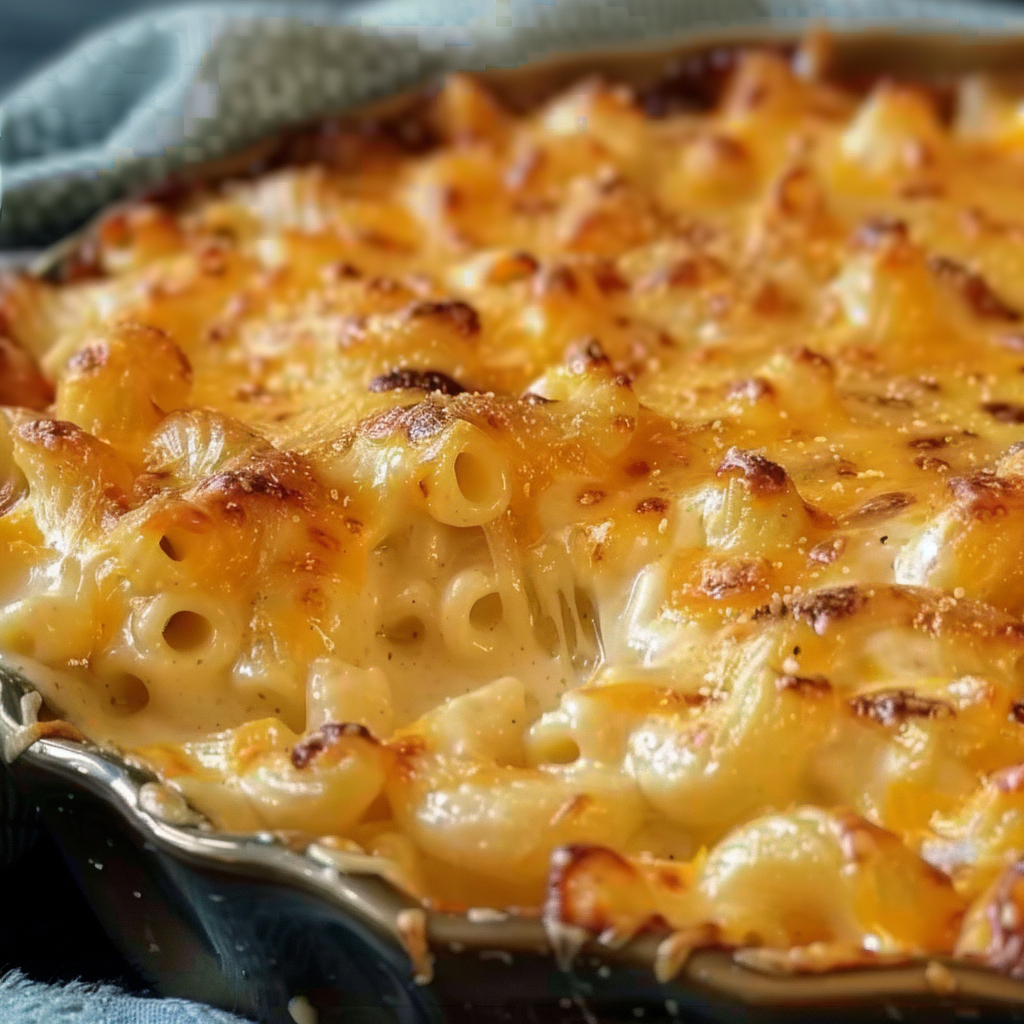
Step-by-Step Instructions with Tips
Mastering stovetop mac and cheese requires more than just combining ingredients — timing, technique, and texture make all the difference. This step-by-step guide ensures each component blends perfectly, delivering a smooth, rich, and indulgent bowl of comfort food.
1. Cook the Elbow Macaroni
-
Bring a large pot of salted water to a boil.
-
Add 8 oz of elbow macaroni and cook until al dente (firm to the bite), following the package instructions — typically 7–8 minutes.
-
Drain the pasta and set it aside. Avoid overcooking, as the pasta will continue absorbing sauce later.
-
For better sauce adhesion, don’t rinse the pasta — the starch helps bind the cheese.
2. Start the Roux Base
-
In a medium saucepan over medium heat, melt 2 tablespoons of unsalted butter.
-
Once melted, whisk in 2 tablespoons of all-purpose flour.
-
Stir constantly for about 1 minute, allowing the mixture to bubble slightly. This removes the raw flour taste while building a thickening base.
-
A proper roux is the key to avoiding a gritty or watery sauce.
3. Add the Milk
-
Gradually pour in 2 cups of whole milk, whisking continuously to prevent lumps.
-
Keep stirring as the mixture heats and thickens — this usually takes about 4–5 minutes.
-
A gentle simmer is perfect; avoid boiling, which can curdle the milk or cause scorching.
At this stage, you’re forming the creamy backbone of the dish. Pinterest tutorials, like those on this cheesy recipe board, often highlight this step as make-or-break for a smooth texture.
4. Stir in the Cheese and Seasonings
-
Once the sauce has thickened, reduce the heat to low.
-
Add 2 cups of shredded sharp cheddar cheese, stirring until melted and smooth.
-
Season with ½ teaspoon salt, ¼ teaspoon black pepper, and, if desired, ¼ teaspoon garlic powder and ¼ teaspoon paprika.
-
Mix thoroughly to ensure even flavor distribution.
For those interested in flavor layering, cheddar cheese is a top choice due to its sharp profile and meltability. You can also substitute or combine with cheeses like Gruyère, fontina, or mozzarella depending on your taste preferences.
5. Combine the Pasta and Sauce
-
Add the cooked elbow macaroni to the cheese sauce.
-
Stir gently until every piece is thoroughly coated and the pasta is evenly distributed.
-
If the sauce appears too thick, add a splash of warm milk to loosen it.
At this point, your mac and cheese should be glossy, creamy, and ready to serve. If you’re exploring additional presentation ideas, one-pot meals like this are often showcased on Pinterest boards such as this pasta recipe collection, where plating and garnishing inspiration can elevate your dish.
Optional Tip
Let the dish sit for 2–3 minutes before serving. This short rest allows the sauce to set slightly, ensuring a thicker, clingier texture that won’t separate on the plate. Whether served in a bowl, skillet, or casserole dish, stovetop mac and cheese is best enjoyed warm and fresh.
Looking to go further? Check out our guide to comfort food recipes that showcase dishes just like this one — creamy, soulful, and always satisfying.
Recipe Variations to Try
While the classic stovetop mac and cheese recipe is a favorite for good reason, it also serves as the perfect base for countless variations. Whether you’re customizing for dietary preferences or adding flair for special occasions, these options let you turn a simple dish into something truly memorable.
Baked Mac and Cheese
For a crispy, golden topping and added depth of flavor, turn your stovetop version into baked mac and cheese.
-
Prepare the stovetop recipe as usual.
-
Transfer it to a buttered baking dish.
-
Top with a mixture of breadcrumbs, Parmesan cheese, and a drizzle of melted butter.
-
Bake at 375°F (190°C) for 20–25 minutes until the top is golden and bubbly.
This variation gives your dish a delightful contrast between the creamy interior and the crunchy topping — a popular method highlighted on many mac and cheese variation boards.
Bacon or Ham Additions
Add richness and a savory twist with crispy bacon or diced ham.
-
Fry bacon pieces until crispy and stir them into the cheese sauce before combining with pasta.
-
Alternatively, use cubed ham for a heartier, smoky profile.
These additions pair beautifully with sharp cheddar and offer extra protein, making the dish feel more like a complete meal.
Spicy Mac
If you enjoy heat, spice up your mac!
-
Add chopped jalapeños, a dash of cayenne pepper, or a swirl of hot sauce to the cheese sauce.
-
Smoked paprika or chipotle powder also enhances flavor while adding warmth.
This version is a favorite for gatherings or game days, offering comfort with a kick.
Veggie-Loaded Version
Add nutrition and color by incorporating vegetables.
-
Stir in steamed broccoli, peas, spinach, or roasted bell peppers.
-
These veggies blend seamlessly into the cheese sauce, making it a great option for kids or picky eaters.
For inspiration, many one-pot pasta recipes showcase creative vegetable combos that elevate classic dishes.
Three-Cheese Blend
If you’re a cheese lover, try mixing:
-
1 cup sharp cheddar
-
½ cup Gruyère or Swiss
-
½ cup mozzarella or fontina
The combination creates a more complex flavor and gooier texture. This trio melts smoothly and adds richness without overpowering the dish.
Experimenting with these variations allows you to tailor the dish to your taste while maintaining the comforting essence of the original mac and cheese recipe.
Best Sides and Pairings
Though mac and cheese can stand alone, pairing it with complementary sides or proteins elevates the meal to a well-rounded experience.
Protein Options
-
Grilled or roasted chicken provides a lean, savory balance to the creamy pasta.
-
Barbecue ribs or pulled pork pair well with the richness of cheese.
-
Crispy fried chicken creates a Southern-style comfort plate.
Bread Pairings
-
Garlic bread or buttery dinner rolls are ideal for scooping up sauce.
-
Cornbread adds a hint of sweetness and texture contrast.
Vegetable Sides
-
A green salad with vinaigrette offsets the richness with acidity and crunch.
-
Steamed broccoli or sautéed spinach adds nutrients and color.
Beverage Ideas
-
A crisp white wine like Chardonnay or Sauvignon Blanc cuts through the creaminess.
-
For non-alcoholic options, iced tea or sparkling water with lemon offers a refreshing palate cleanser.
These pairings turn your classic stovetop mac and cheese into a complete and satisfying meal.
Storage, Reheating, and Make-Ahead Tips
Knowing how to store and reheat mac and cheese properly ensures that it stays just as delicious the next day.
Storing Leftovers
-
Allow to cool completely, then transfer to an airtight container.
-
Store in the refrigerator for up to 3–5 days.
Reheating Tips
-
Stovetop: Add a splash of milk and reheat over low heat, stirring often to maintain creaminess.
-
Microwave: Place a portion in a bowl, add a teaspoon of milk, cover loosely, and microwave in 30-second intervals, stirring in between.
Avoid overheating, as cheese can separate and become oily.
Freezing
-
Freezing is possible, though texture may change slightly.
-
Cool completely, portion into freezer-safe containers, and freeze for up to 2 months.
-
Thaw overnight in the fridge before reheating.
Make-Ahead
-
Prepare the recipe up to the point of combining pasta and sauce.
-
Store the sauce and pasta separately.
-
Reheat the sauce, then stir in the pasta just before serving for best texture.
Following these storage tips helps preserve flavor and prevents the cheese sauce from breaking.
Common Mistakes to Avoid
Perfecting mac and cheese takes practice, and these common errors can easily be avoided:
-
Overcooking the pasta: It will become mushy when mixed with hot sauce. Stick to al dente.
-
Skipping the roux step: Without it, the sauce may be runny or grainy.
-
Using pre-shredded cheese: It contains anti-caking agents that prevent smooth melting. Always shred fresh cheese.
-
Under-seasoning: Cheese can be salty, but a bland sauce ruins the dish. Taste and adjust seasoning as needed.
-
Overheating the cheese sauce: High heat can cause the cheese to curdle or become greasy. Always melt cheese on low heat.
By avoiding these mistakes, you ensure a creamy, balanced, and flavorful result every time.
Nutrition Information (Optional but Useful)
This classic stovetop mac and cheese recipe makes approximately 4 servings. Nutritional values are approximate and may vary based on ingredients:
-
Calories: 450–500 per serving
-
Carbohydrates: 35–40g
-
Fat: 25–30g
-
Protein: 15–18g
-
Sodium: 400–500mg
To reduce calories and fat:
-
Use low-fat milk
-
Reduce cheese by ¼ cup
-
Add steamed veggies to increase volume without extra calories
For those tracking nutrition, these numbers provide a useful guide to balance indulgence and dietary goals.
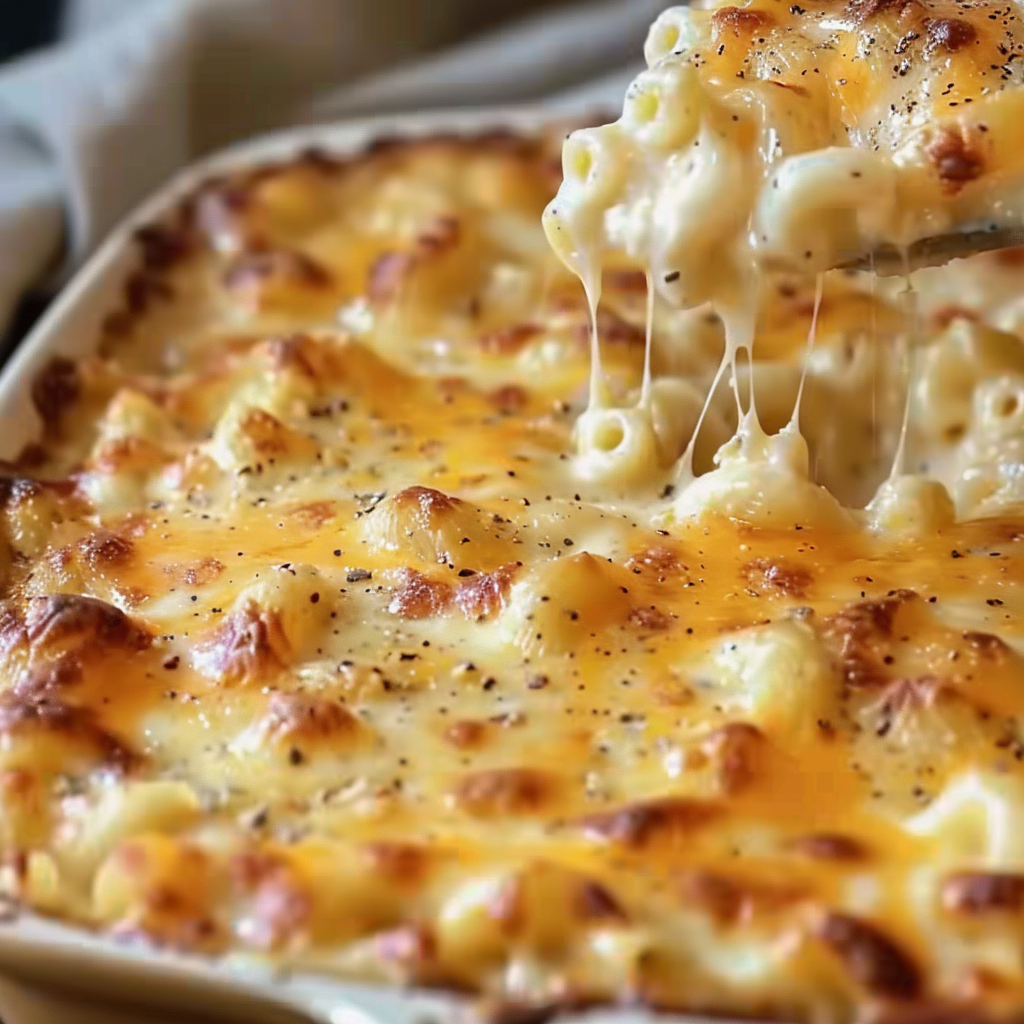
FAQs
What’s the best cheese for mac and cheese?
Sharp cheddar is the most popular choice for its bold flavor and excellent melting ability. However, you can mix in Gruyère, mozzarella, or Monterey Jack for different textures and tastes.
Can I use a different pasta shape for mac and cheese?
Yes, though elbow macaroni is traditional. Shells, cavatappi, penne, and rotini also work well as they hold sauce efficiently. Learn more about pasta options from this guide on macaroni.
How do I make mac and cheese creamier?
Use full-fat milk or cream, make a proper roux, and add cheese slowly over low heat. Avoid pre-shredded cheese to ensure smooth melting.
Is baked mac and cheese better than stovetop?
It depends on your preference. Baked versions offer a crispy, golden top, while stovetop mac and cheese is quicker and creamier. For a baked version, check out recipes on Pinterest boards like this.
Can mac and cheese be made ahead of time?
Yes. Cook pasta and sauce separately, refrigerate, then combine and heat just before serving. If reheating leftovers, add a splash of milk for creaminess.
Mac N Cheese Recipe The Ultimate Comfort Food Guide
This stovetop mac and cheese recipe delivers the ultimate comfort food experience with tender elbow macaroni, a creamy cheddar cheese sauce, and just the right amount of seasoning. Perfect as a hearty main or satisfying side, it’s quick to make and endlessly customizable. Whether you keep it classic or try one of the many variations, this dish is sure to be a hit for weeknights, holidays, or anytime you’re craving cozy, cheesy goodness.
- Author: Clara
Ingredients
- 8 oz elbow macaroni
- 2 tablespoons unsalted butter
- 2 tablespoons all-purpose flour
- 2 cups milk (preferably whole milk)
- 2 cups shredded sharp cheddar cheese
- ½ teaspoon salt
- ¼ teaspoon black pepper
- ¼ teaspoon garlic powder (optional)
- ¼ teaspoon paprika (optional)
Instructions
Cook the macaroni according to package directions. Drain and set aside.
In a saucepan over medium heat, melt the butter.
Whisk in the flour and cook for about 1 minute until it forms a paste.
Slowly pour in the milk while whisking continuously to avoid lumps.
Continue cooking and stirring until the sauce thickens, about 4–5 minutes.
Add the shredded cheddar cheese, salt, pepper, garlic powder, and paprika. Stir until the cheese is fully melted and the sauce is smooth.
Add the cooked macaroni to the cheese sauce and stir until well coated.
Serve warm.
Notes
-
For best results, use freshly shredded cheese — it melts better and delivers a smoother sauce.
-
Whole milk creates the creamiest texture, but you can use 2% or add a splash of cream.
-
Stir constantly during sauce-making to avoid lumps and ensure a velvety finish.
-
Customize easily with add-ins like bacon, jalapeños, or veggies.
-
Double the recipe for potlucks or holiday meals — it scales beautifully.
